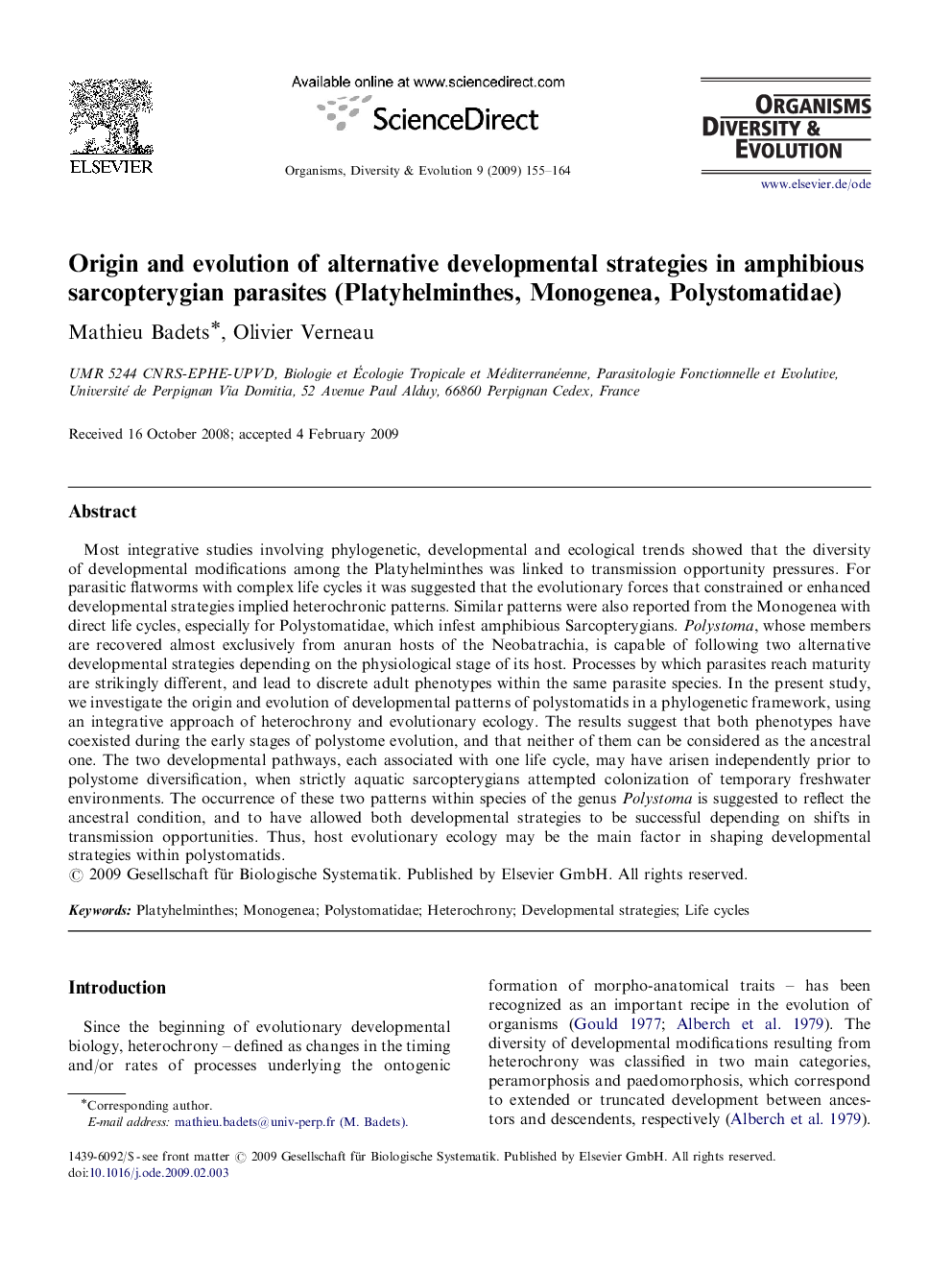| Article ID | Journal | Published Year | Pages | File Type |
|---|---|---|---|---|
| 4458626 | Organisms Diversity & Evolution | 2009 | 10 Pages |
Most integrative studies involving phylogenetic, developmental and ecological trends showed that the diversity of developmental modifications among the Platyhelminthes was linked to transmission opportunity pressures. For parasitic flatworms with complex life cycles it was suggested that the evolutionary forces that constrained or enhanced developmental strategies implied heterochronic patterns. Similar patterns were also reported from the Monogenea with direct life cycles, especially for Polystomatidae, which infest amphibious Sarcopterygians. Polystoma, whose members are recovered almost exclusively from anuran hosts of the Neobatrachia, is capable of following two alternative developmental strategies depending on the physiological stage of its host. Processes by which parasites reach maturity are strikingly different, and lead to discrete adult phenotypes within the same parasite species. In the present study, we investigate the origin and evolution of developmental patterns of polystomatids in a phylogenetic framework, using an integrative approach of heterochrony and evolutionary ecology. The results suggest that both phenotypes have coexisted during the early stages of polystome evolution, and that neither of them can be considered as the ancestral one. The two developmental pathways, each associated with one life cycle, may have arisen independently prior to polystome diversification, when strictly aquatic sarcopterygians attempted colonization of temporary freshwater environments. The occurrence of these two patterns within species of the genus Polystoma is suggested to reflect the ancestral condition, and to have allowed both developmental strategies to be successful depending on shifts in transmission opportunities. Thus, host evolutionary ecology may be the main factor in shaping developmental strategies within polystomatids.
